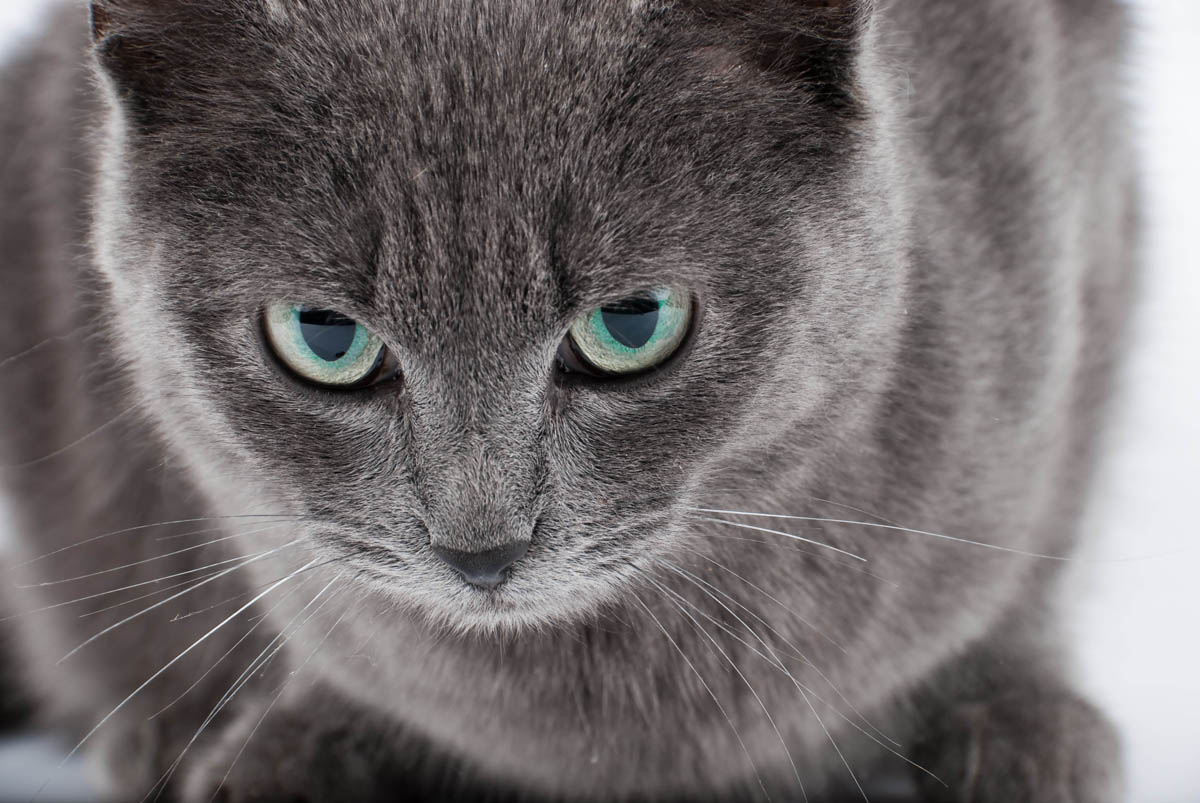At a glance
Constipation is a condition where the cat has difficulty passing a stool due to hard, dry feces.
How to help:
- Increase water consumption with additional water bowls and/or pet water fountains
- Increase fibre by adding cooked pumpkin, Metamucil or bran to the diet
- Administer cat-safe laxatives or stool-softeners such as Miralax or Laxatone
- Regularly brush the cat
- Encourage daily exercise which speeds up gastrointestinal transit time
- Change the diet to one with higher water content such as canned food or a hairball formula
- Keep litter trays clean
Constipation is the infrequent passage of hard, dry feces. There are several causes of constipation in cats which are covered in more detail here. Cats usually pass a stool once or twice a day, if the feces remain in the colon for too long, they become dry and hard, making them more difficult to pass.
The goal of treating constipation is to increase fluids and fibre in the diet. There are several ways you can do this. However, if you do not notice an improvement within 12-24 hours, do see your veterinarian because constipation can quickly turn into obstipation, which is serious.
Hairballs can be a cause of constipation if you have a cat who is prone to constipation you may want to consider feeding him a specially formulated “hairball diet”. Also, make sure you groom him regularly to remove loose hair from his coat.
How to treat constipation in cats:
Increase water consumption:
Dehydration is a common cause of constipation in cats. He must have access to fresh, clean drinking water is essential. Cats can be particular when it comes to drinking water. Encourage drinking by adding more water bowls around the home, or purchase a water fountain.
Increase fibre:
Adding fibre to your cat’s food can help with mild constipation. There are several ways to do this.
- Add 1/2 – 1 teaspoon unflavoured Metamucil to canned food.
- Pumpkin is high in fibre and water and is an excellent way to get more fibre into your cat’s diet. Add 1-2 tablespoons of canned (not the canned variety for pumpkin pie as this contains sugar) or boiled pumpkin to your cat’s meal.
Dietary management:
- Switch to canned food or a raw diet which has a higher water content.
- Consider a hairball diet for cats prone to hairballs.
Exercise:
Schedule time to play with the cat at least once a day as exercise can help to increase gastrointestinal transit time, which is the passage of food through the gastrointestinal tract.
Litter trays:
- Cats can be quite fussy when it comes to their litter tray and if they are not happy, this can cause them to override their urge to defecate. Make sure there are enough litter trays (one per cat, plus one extra), make sure they are regularly scooped and keep them in a low-traffic area.
When to see a veterinarian
- The cat appears to be in pain or cannot pass a stool at all
- There are other accompanying symptoms such as loss of appetite, abdominal pain or lethargy
- The cat is still passing only small amounts of feces 12-24 hours after you have introduced fiber to his diet.
Not all cats who are straining to go to the toilet have constipation. Some cats are prone to developing urinary blockages which are a medical emergency. If you notice your cat straining to go to the toilet, licking his genitals, meowing, urinating outside the litter tray. An inability to urinate is life-threatening and requires immediate veterinary attention.
What not to do
DO not attempt to treat constipation with the use of mineral or vegetable oils via syringe as the oil can very easily end up in your cat’s lungs and cause aspiration pneumonia.

